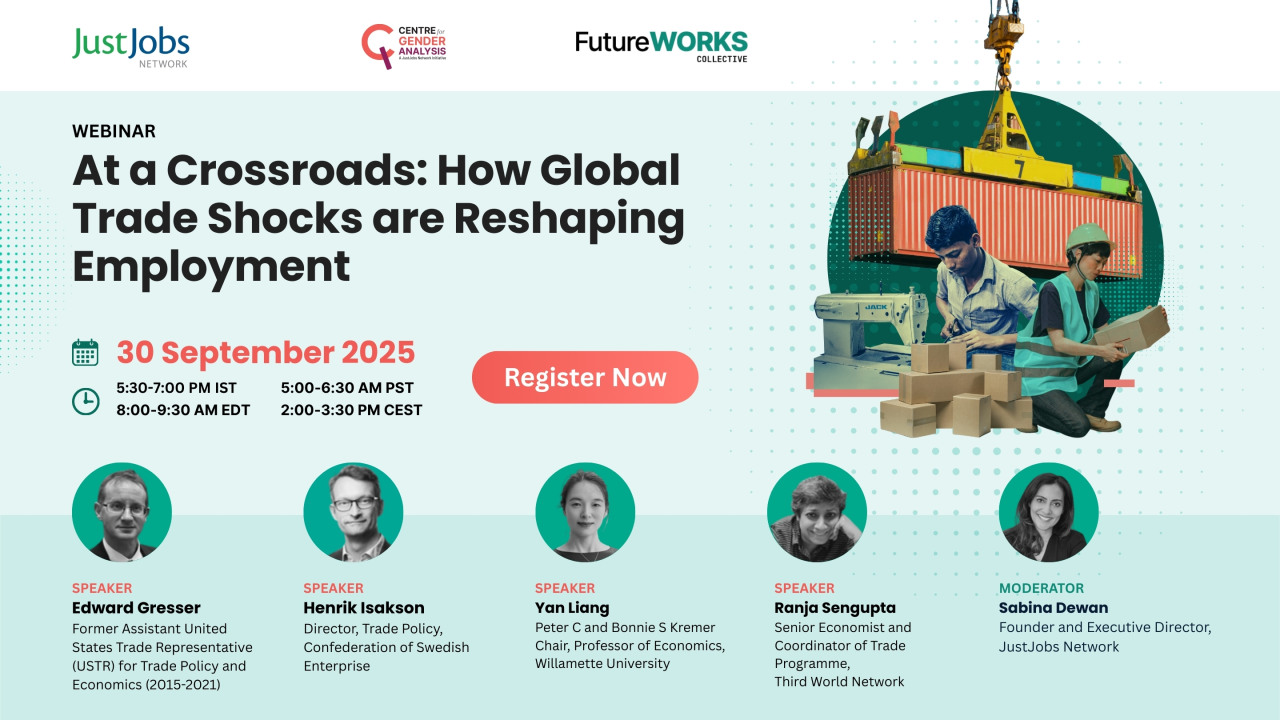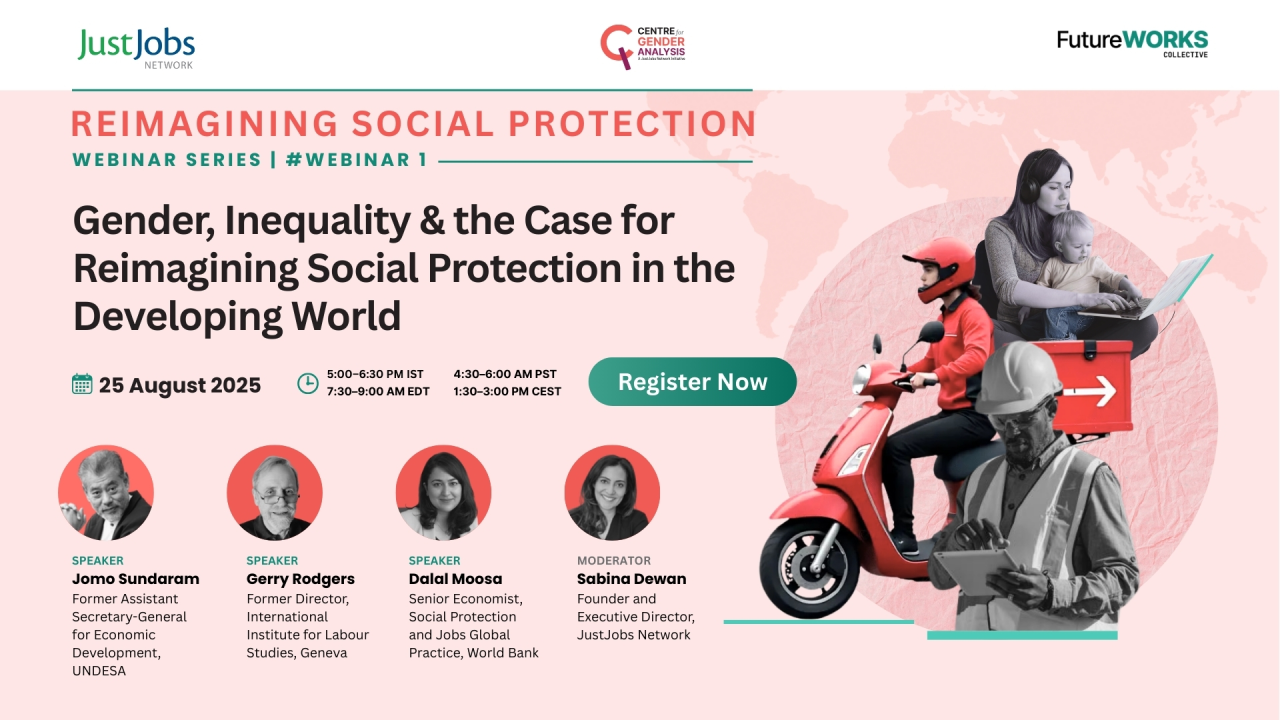In early July 2021, as a group at FemLab.Co, we explored how to think about the connections between feminism, feminist design, and labour collectives that emerged in our work as researchers, lawyers, activists and designers. As part of this exercise, we were interested in discussing the ways in which we could come together to identify the workings of a collective, ascertain and reflect on issues of power and inequality that we were seeing in our field work, as well as imagine and speculate on what we could do and see as we continued our work, and digital storytelling. For the purpose of the workshop, the group members contributed their views in their individual capacities but also gave insights from their sectors of work namely, construction, sanitation, garment, home-based salon services, ride-hailing, and petty artisanal work.
Co-creating, imagining and speculating
This piece is in part a reflection on the workshop and an outcome of contributions from the team members which we have summarised. It also serves as a reflection on the format of adopting a speculative design workshop as a medium for discussion and sharing. The workshop was inspired by a framework from Association for Women’s Rights in Development (AWID) that appeared in their exploratory toolkit called Feminist Realities Our Power in Action. AWID, a global, feminist, membership-based, movement-support organization believes “that feminist co-creation is driven by the desire to establish mutuality, equality and equity […]. It is collaborative, consensual and mutually-advantageous” where co-creation refers to a collaborative process in ”which stories are told and shared, dreams are dreamt and strategies for change are conceived”, and this was the guidance which we adopted for our discussions.
A key motivation of the workshop was to explore how to brainstorm collectively, without being weighed down by academic or technical knowledge of building a collective. We aspired to see if it was possible to co-create and collaborate on what people understood as structures for a feminist labour collective, and in doing so also unpack and imagine the elements of some of the constituent concepts including that of feminism and feminist design.
In order to be able to brainstorm, we felt that the best way to do so was to use the method of a workshop. The workshop was conducted online because the participants work across geographies and time zones. This established some constraints within which the workshop would operate. We were conscious as workshop facilitators that we were to drive a discussion on online platforms which can hinder communication and participation. For instance, only one person can speak at a time in an online meeting, there are network issues, and often not everyone is heard. Hence, the workshop was designed such that the participants could respond to the prompts in more ways than one. While responses could be verbalised in the Zoom room, participants could respond in writing on virtual sticky notes on the Miro board, which is an online collaborative tool.
This allowed multiple people to speak or record their responses, and as responses appeared in real time, it led to a collaboration where ideas emerged in response to what other participants had said. For instance, as a warmup to the workshop and Miro, which was a new platform for all our participants, we started with the game of ‘Yes, And’. The prompt was simple, “What would you like a feminist labour collective to be like?”. ‘Yes, And’ is a popular ice breaker in workshops where participants have to build on each other’s ideas. In our case, it was useful in enabling everyone to respond and to have all the voices in the room participate. It also set the stage for our next activity, where we would get into the details of imagining a feminist labour collective.
With everyone together in one Zoom room and one Miro board discussing parts of an issue, we were able to validate each other’s responses, draw linkages across ideas, and in a few cases articulate some very fundamental concepts that the larger group seemed to be resonating with. Participants could adjust the time they wanted to spend on the different parts of the workshop. They could revisit bits as well as go ahead if they felt they were done contributing to a certain section. Though we were moderating the workshop, it allowed flexibility to the group of around 7-8 persons to participate in a deliberative manner. None knew more than the other or had access to more or different information. It is the framework of a workshop that allowed these meta reflections to happen as it emphasized a do-it-yourself-work-in-progress type of atmosphere. From our discussions, it was apparent that if we were ultimately going to be talking about breaking hierarchies and power structures, this couldn’t have been done in an exchange where there are a few voices, or where some voices have more power than the other. Building a work-in-progress workshop in that sense meant less structure, but also more fluidity. However, we recognised that even in this format where things are open, there was a need to stop, and check that everyone in the room had the opportunity to contribute.
Understanding understandings
In setting out to imagine a collective we had a series of prompts. Drawing from the AWID workshop, we explored four aspects of a potential labour collective (see image below). The first was to understand the nature of the people that would make up the collective: examining their backgrounds, their motivations for joining, their opportunities to leave, as well as the kinds of relationships that they fostered. The second was to think of a place where a collective would come together and meet, what would define it as a space, what would ensure that it was a safe and secure space, and what kind of relationships would it afford. The third was to think in terms of the resources of the collective in terms of what resources are necessary to begin a collective, as well as to sustain and grow it. We also looked at how such resources could be shared and the ways in which resources could lead to community ownership. The final aspect was to think in terms of governance which was to think in terms of the values that govern the collective, the forms of accountability, and the ways to make it representative and visible.

Image credit: Justice Adda / FemLab.Co
In determining how to address some of these questions, the group identified two aspects that required further thinking. The first aspect was that of presence which included thinking about questions of identity, autonomy and representation in building a collective. The second aspect was that of process which involved the intent, the communicative aspects, the types of relationships and drivers of care that would inform the development of a collective. Through these two facets it became clear that there was also a need to be able to understand many worlds and recognise an epistemic diversity of the different members and the communities that the group were working with, thereby imagining a collective not in terms of key criteria, but rather, as multitudes with competing, complementary and even conflicting views. It became apparent that as we imagined what a feminist labour collective could look like, we also needed to think as a collective in terms of addressing the challenges of people, place, resources and governance that influence us personally and professionally.
Some preliminary connections
People

In the discussion on people, the group identified challenges of hierarchy, agency, motivations, stakeholders, external influences (like societal and familial). They raised questions of who made decisions and what methods were used. The group was interested in how agency was distributed and how transparency could be maintained for all stakeholders.
Places

There were many questions about access in physical and digital spaces while discussing the component of Places. There were discussions on the plurality of digital spaces, about borders and boundaries in spaces and how time affects those who experience these places. The group also addressed how space should be one that could nurture growth, and create feelings of care, trust and confidentiality.
Resources

In the discussion on the resources needed for a collective, there was a mention of tangible and intangible resources which ranged from considerations of safe spaces and questions of access and engagement, of associations of value with resources that are non-monetary and built on non-capitalistic systems, and the ability to create resources for the collective. There was acknowledgement of economic, social and cultural capital as well as the commonality of experiences that are all essentials for building a collective.
Governance

The discussion on Governance touched upon how maximum representation from different social groups could be achieved. Questions of transparency, recognising personal and professional priorities, different aspects of accountability were discussed in addition to decentralisation, and developing codes of conduct.
Conclusion
In brainstorming around the tenets of building a feminist labour collective, we aspired to create a discussion where, as Dunne and Raby explain, “design thrives on imagination and aims to open up new perspectives on what are sometimes called wicked problems, to create spaces for discussion and debate about alternative ways of being, and to inspire and encourage people’s imaginations to flow freely.” The workshop as a method allowed us an opportunity to do so.
It provided a space where the team would discuss with a disciplinary openness, such that interventions could be both substantive and process based. There was a capacity to work with experiential ideas, such that the interventions were grounded in the ways in which people lived and understood their everyday acts and connections to feminism and how these could be understood in the design of ordinary things. In doing so, the workshop afforded flexibility, fluidity and more importantly capacity to collaborate, one that gave freedom for new ideas, but also capacity to think through the limitations of existing ones.

Image credit: Justice Adda / FemLab.Co
This blog was originally published on FemLab.Co here.




